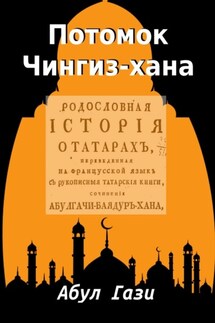Indo-European ornamental complexes and their analogs in the cultures of Eurasia - страница 9
“Scythian-Siberian animal style” was born, and in the Tagar time (7—1 century BC) BC), since along with the images of animals on the famous Minusinsk openwork belt plates, there is often an ornament typical for the decor of Andronov ceramics, in particular, a lattice of S-shaped elements. Common in the Middle Yenisei in the 3rd – 1st century BC, these plates are found on the territory of Ordos and Inner Mongolia, which was apparently associated with the migration of the population of the southern outskirts of the Western Siberian taiga and more southern and eastern ones that began at the turn of the Bronze and Iron Ages. Areas.
Tagar products
Thus, we can state that the traditional ornament, consisting of meander, swastika and S-shaped forms, characteristic of the decor of Andronov ceramics, existed on the territory of Western Siberia, in particular the Minusinsk Basin, up to the first centuries of our era. Some of these ornamental motifs reach Ordos and Inner Mongolia. In a relict, fragmentary form, many Andronovo compositions continued to live in the art of the peoples of Siberia up to the present day.
Returning to the European part of our country, in this particular case to the North Russian lands, we must say that, contrary to the prevailing belief in science so far, that the North Russian region is characterized, first of all, by plot compositions, both in embroidery and Even before the 20—30s of the 20th century, geometrically, ornament played a huge role in textile decoration. Moreover, on the branched spacers made by the hands of North Russian peasants in the late 19th and early 20th centuries, not individual elements of the Andronovo ornament, not its later transformations, were preserved, but whole ornamental complexes of the classic carpet pattern, the ritual nature of which was mentioned above. Such ornaments, designed in most cases in the ancient red-and-white color scheme, consisting of meanders, triangles, zigzags, rhombuses, swastikas, “jibs”, decorate the sleeves, hem and shoulder of women’s shirts, the edges of aprons, belts, ends of towels, etc. e. ritual, sacredly marked things that, in addition to purely everyday things, also performed magical and protective functions. As in the entire Andronovo ornament, in North Russian brane weaving, the composition is divided into three horizontal zones, with the upper and lower ones often duplicating each other, and the middle one, as a rule, bears the most important patterns from the point of view of Samantically significant. It is here that you can find the most diverse motifs of meander, “jibs”, swastikas, absolutely identical to Andronov’s, and their convergence is striking.
Turning again to the idea of S. V. Ivanov about the uniqueness of ornamental complexes, that “the tribes or groups of tribes that developed them retain the motives included in the complex for a long time,“and even losing connection with each other, continue to keep communities of these groups”, in our case, we can conclude that the ornamentation of the Andronov ceramics of the 17—11th century BC is likely to be related. and decor of North Russian branded weaving, embroidery and lace of the late 19th – early 20th century. To answer the question of how the tradition could have been preserved for at least 3500 years with practically no changes, it is necessary to find out which ethnic groups were carriers of this tradition throughout this time. Since in science there is a widespread opinion that there were rather long and ancient ties between the Indo-Iranian and Finno-Ugric areas, and, in addition, the north of the European part of the USSR, as a rule, is considered as the territory inhabited by the time the Slavs arrived here in the 1st millennium AD. By the Finno-Ugric groups, it is natural to assume that the bearers of the Andronov ornamental tradition were precisely the Finno-Ugrians, who adopted it in ancient times from the Indo-Iranians and preserved it until the end of the 1st millennium AD. It is assumed that most of this Finno-Ugric massif was assimilated by the Slavs, but, nevertheless, peoples such as Karelians, Vepsians and Komi continue to live among the Russian population, not dissolving in it, preserving the language and ethnic traditions.






